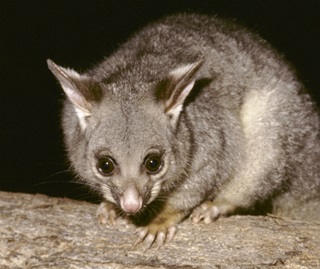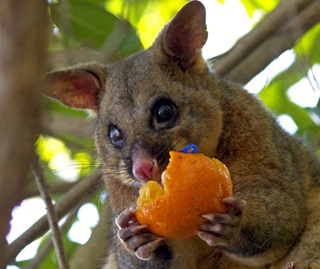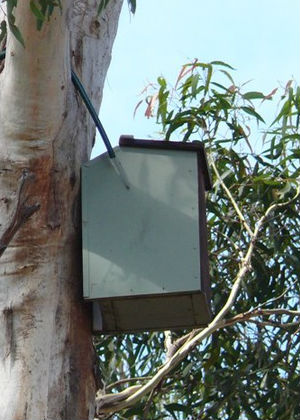What do they look like?
 Brush-tailed possums are about as big as domestic cats and have a pointed snout, pink nose, long whiskers and large ears. They also have sharp claws, which they use to climb trees and comb their fur.
Brush-tailed possums are about as big as domestic cats and have a pointed snout, pink nose, long whiskers and large ears. They also have sharp claws, which they use to climb trees and comb their fur.
Brush-tailed possums vary considerably in size and colour. In Tasmania, they tend to be black or grey and have adapted to the cold climate by becoming much larger and furrier than brush-tailed possums on the mainland. In Queensland, however, the animals are more copper-coloured and tend to be smaller than elsewhere.
Where do they live?
The brush-tailed possum is the most widely distributed possum in Australia. It can be found in forests and woodlands all along the east coast and also lives in inland areas along tree-lined rivers and creeks. Possums are nocturnal animals and are active at night; they usually spend the day sleeping.

What do they eat?
In the bush, brush-tailed possums feed on leaves, buds, flowers and fruits. They have strong teeth and often use their front paws to hold their food while eating.
The brush-tailed possum is the Australian marsupial most often seen by city dwellers, as it is one of few that thrives in urban areas, as well as a wide range of natural and human-modified environments. Around people's homes, brush-tailed possums are inventive and determined foragers, with a liking for fruit trees, vegetable gardens and kitchen raids.









